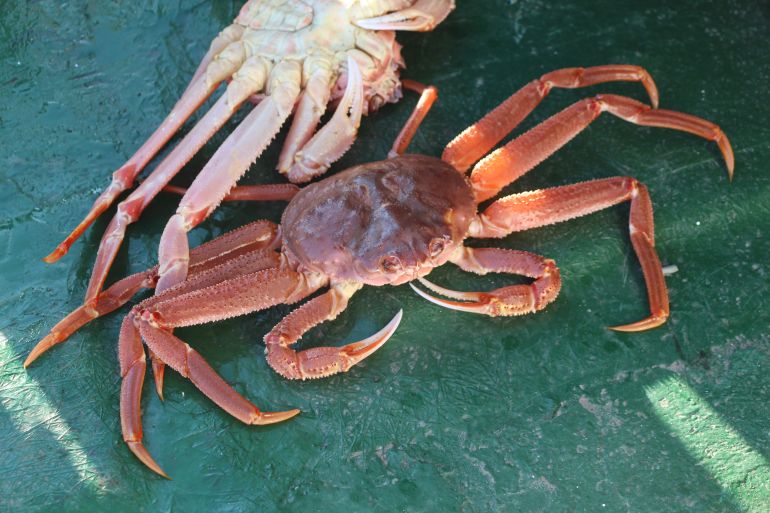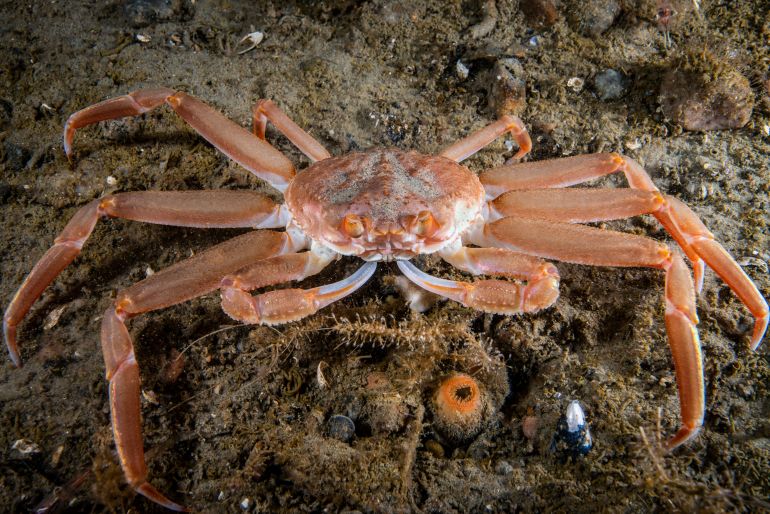A team of marine biologists from the Alaska Fisheries Science Center of the National Oceanic and Atmospheric Administration in the United States has solved the mystery of why nearly 10 billion ice crabs disappeared from the Bering Sea in 2018 and 2019, when the waters there were very warm. .
The Bering Sea is located in the North Pacific Ocean, and along with the Bering Strait, it forms a gap between the two largest land masses, which are Eurasia and the Americas.
In their study, published in the journal Science, the team used data from previous studies on how snow crabs respond to warmer temperatures to solve the puzzle.
Gordon Cross, a member of the North Pacific Research Council, published an article in the same issue of the journal outlining the events surrounding the population collapse of ice crabs, and the work the team has done in this new effort to find out why.

die from hunger
Snow crabs are relatively small crabs, and despite their name, they are not white, but red, like lobsters. They live on the ocean floor in shallow areas, and they are a delicious seafood.
Fishermen (and scientists) in Alaska first noticed a significant decline in their numbers in 2021, then due to the Corona epidemic, catching and studying crabs stopped for a year.
As a press release from the Alaska Fisheries Science Center notes, in 2022, the Alaska snow crab fishery was closed for the first time in history due to a sudden significant decline in the numbers of adult and juvenile crabs.
The full extent of cancer disappearance was not observed until earlier in 2023, when more than 10 billion cancers were lost.
Upon discovering this alarming decrease, the research team set out to find out what had happened. The researchers began exploring the surrounding areas, hoping that the cancers had simply moved to another location, but no sign of them was found.

Heat waves
Then, according to a Phys.org report, the team noticed that the area had experienced a heat wave before and during the crab's disappearance, and so they turned to the results of a previous study that found that when water temperatures rise, the crab's energy requirements increase.
The researchers found that if the water temperature increased by just 3 degrees Celsius, the crabs' calorie needs doubled.
Records showed that during the heatwave, the water temperature rose by 3°C, meaning the crabs needed twice as much food to support themselves.
The research team also found that just before the heatwave, the number of crabs rose dramatically, meaning there was a significant increase in competition for food. The researchers concluded that this led to the crabs dying of starvation.
Source: websites


Post a Comment